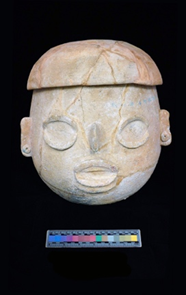Uncovering the Day-to-Day Objects of the Past
- Elitsa Ilieva
- May 15, 2023
- 4 min read
Like a solid portion of all Tufts students, Professor Lauren Sullivan went through most of her undergraduate career as a pre-med student. However, an archaeology class in the spring of her senior year changed that. It led to a summer in Belize where she was faced for the first time with on-site excavation in a part of the world she hadn’t been to before, with few of the luxuries she was used, but ended with a definite decision that she wanted to keep doing this. Earning her PhD in Anthropology from the University of Texas at Austin, she has been continuously dedicated to analyzing pottery and understanding the rise of complex societies with a focus on the Maya.


Professor Sullivan currently serves as the ceramic analyst for an archaeology project in Northwestern Belize, where her role includes using pottery to learn more about the history of the site. She says that pottery is “a great way to date a site… to help researchers guide their excavations as they’re going” and that it can provide clues about the function of a structure and status of the person or place that owned it. The group has even been able to do “residue analysis on the inside of vessels, even identifying the remains of chocolate,” she notes, indicating the use of the vessels to provide information on diet as well. Examples of the ceramics found on site can be seen on the right. Hearing her describe it, I could almost imagine the lives that these vessels and sculptures had with the people that made use of them thousands of years ago.
Professor Sullivan is currently working more on this site to try to find relationships between the different locations in terms of the pottery. She comments that her “hypothesis is that the local vessels are more likely to be made on site by each different family and so they have a lot of variety in the clay, where the rest can pay to have the pottery come in from some kind of marketplace exchange.” To investigate this, she is searching for similarities between ceramics found in different sites through methods such as neutron activation analysis (NAA). NAA determines the concentration of elements in materials by directing a lot of neutrons onto the sample, resulting in radioactive isotopes. As the spectra for each element’s emissions and radioactive decay paths is known, the spectra of the emissions of the radioactive sample can be analyzed and compared with the existing spectra to find the concentration of each of the elements in the sample. Ceramic and other art analyzers frequently use this technique due to its ability to provide information about the piece without damaging the sample. This information allows Professor Sullivan to know more about the dynamics that went on in the Maya civilization and the implications that it has for the general class structure and way that life worked.

In addition to the technical scientific knowledge necessary for the field, it is clear that it also takes great passion and dedication to the history, art, and overall process to successfully perform this work. Eagerly discussing her plans to go back to Belize in the 2023 season for field work, she mentions that it is definitely a transition to go from life here to a site with “limited power with generators, no internet, no hot water, no latrines.” Pictured below is also one of the common visitors to the site, though they stick to the trees. She further paints an image of the site by explaining what the group’s interactions with the Malaysians who live nearby look like. “We hire a lot of Malaysians to help us excavate. While they might not be ‘academically trained,’ they’re better at excavating than a number of people I’ve seen.” Their collaboration extends outside of the field site as well, such as when a whole vessel is found and is turned over to the museum, and even in the beginning of the project when they must get approval to start the excavation.

Her practice as a professor also extends while she is in Belize and further illustrates the cultural significance of her work. To help the youth of Belize learn more about their heritage and understand the history of the land they are on, they have programs where students visit the excavation site and researchers speak at schools. She navigates cultural appreciation and returns knowledge to the community that inhabits this region now as she puts pieces of the puzzle together from ceramics. It is empowering to see how one person’s passion can produce so many layered benefits. This will only continue to be true, as Professor Sullivan’s work allows her to “preserve the past with the future and learn what we can about the past to help us inform our future.” Considering the unexpected changes in weather that we are experiencing today (70º days in November!), she gave a very relevant example regarding learning how the Mayas handled the drought that occurred that contributed to their downfall and how we can learn from them as our current climate continues to change.
In the ultimate mix of physical discovery and imagining the human behaviors that could have led to these remnants being uncovered thousands of years later, Professor Sullivan’s research shows once more the joy and importance of looking back to the past.

_edited_edited.png)



Comments